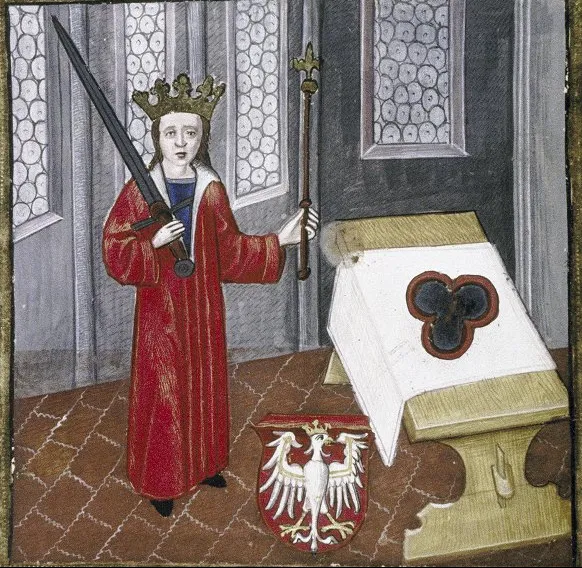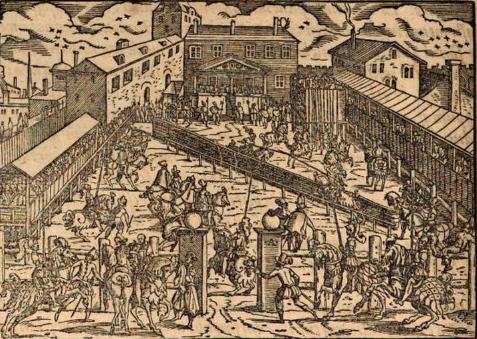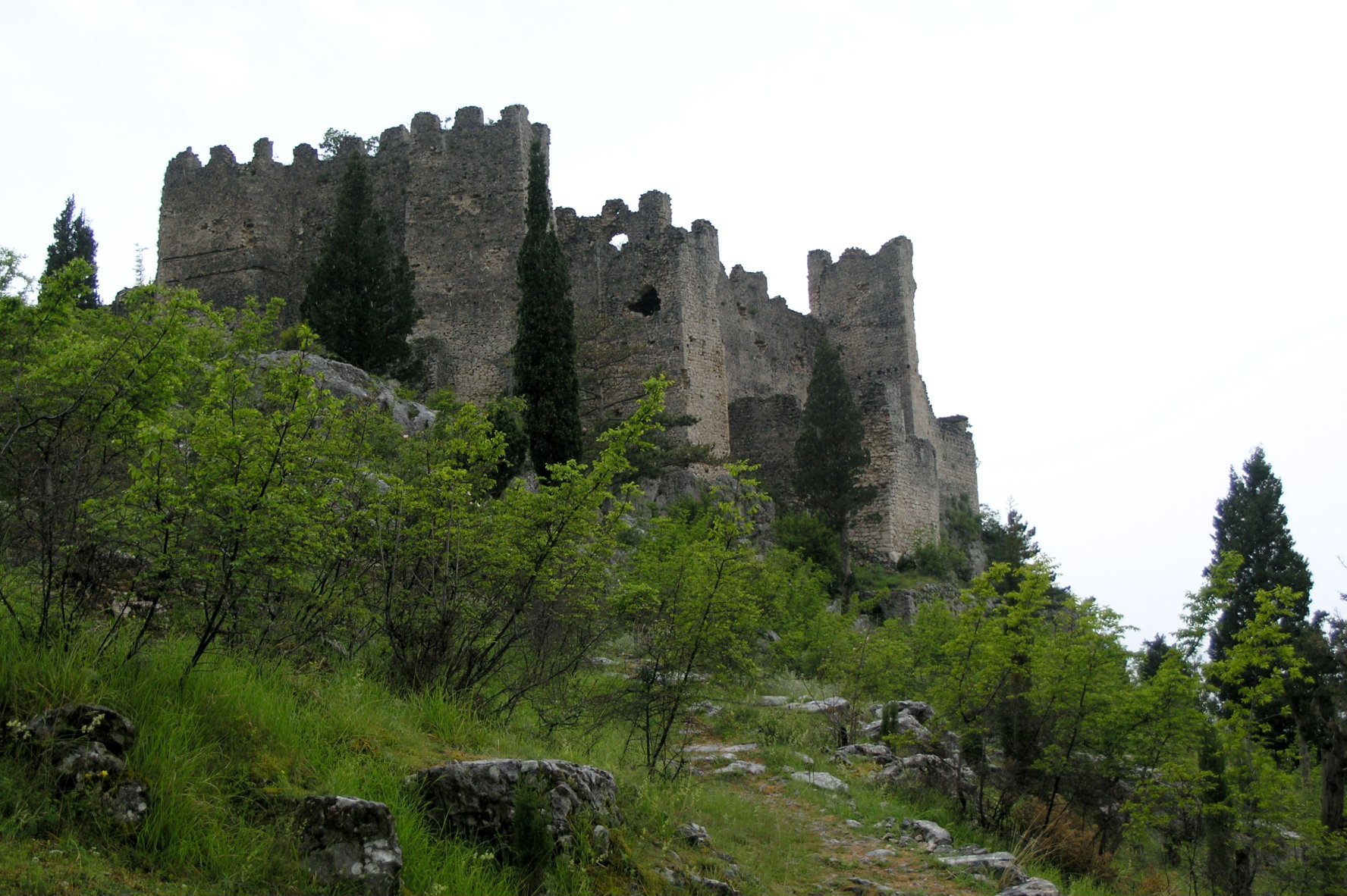|
1444
Events January–March * January 2 – The Battle of Kunovica is fought between the Christian crusaders, led by John Hunyadi, and the Muslim armies of the Ottoman Empire in what is now Serbia. After having retreated 10 days earlier following their loss in the Battle of Zlatitsa, Hunyadi and King Wladyslaw III of Hungary defeat the Ottoman forces and take several of their commanders as prisoners of war, including Mahmud Bey, son-in-law of the Sultan Murad II. * February 15 – Stjepan Vukčić Kosača, the Grand Duke of Bosnia, signs a treaty with the King Alfonso of Naples, agreeing to become his vassal in exchange for help against the Republic of Venice. * March 2 – The League of Lezhë, an alliance of Albanian principalities, is established in Lezhë; George Kastrioti Skanderbeg is proclaimed commander of the Albanian resistance. April–June * April 15 – King Wladyslaw of Hungary appears before the ''Országgyűlés'', the Diet of Hun ... [...More Info...] [...Related Items...] OR: [Wikipedia] [Google] [Baidu] |
Władysław III Of Poland
Władysław III of Poland (31 October 1424 – 10 November 1444), also known as Ladislaus of Varna, was King of Poland and Union of Horodło, Supreme Duke of the Grand Duchy of Lithuania from 1434 as well as King of Hungary and List of dukes and kings of Croatia, Croatia from 1440 until his death at the Battle of Varna. He was the eldest son of Władysław II Jagiełło (Jogaila) and the Lithuanian noblewoman Sophia of Halshany. Władysław's succeeded his father shortly before turning ten in 1434 and was, therefore, deemed unfit to rule until coming of age. Cardinal Zbigniew Oleśnicki (cardinal), Zbigniew Oleśnicki acted as regent and a temporary ''provisores'' council executed power in the king's name. However, Władysław's legitimacy to the crown was contested by Lesser Poland, Lesser Polish nobles favouring the candidacy of Siemowit V of Masovia, who was of Piast dynasty, Piast lineage. In the aftermath of the coronation, Spytko III of Melsztyn accused Oleśnicki, th ... [...More Info...] [...Related Items...] OR: [Wikipedia] [Google] [Baidu] |
Battle Of Torvioll
The Battle of Torvioll (), also known as the Battle of Lower Dibra, was fought on 29 June 1444 on the Plain of Torvioll, in what is now Albania. Skanderbeg, Gjergj Kastrioti Skanderbeg was an Albania under the Ottoman Empire, Ottoman Albanian general who decided to return to his homeland and take the reins of a new Albanian league against the Ottoman Empire. He and 300 other Albanians who fought in the Battle of Niš (1443), Battle of Niš deserted the Ottoman Army and made their way to Krujë, which quickly fell due to subversion. He then formed the League of Lezhë, a confederation of Albanian princes united in war against the Ottoman Empire. Realising the threat, Murad II sent one of his most experienced generals, Ali Pasha, to crush the new state with a force of 25,000 men. Skanderbeg organised an army of 10,000-15,000 men assembled from the League of Lezhë to defeat Ali Pasha's army. The Albanians confronted Ali Pasha on his way to Krujë, and on 29 June 1444, Skanderbeg's ... [...More Info...] [...Related Items...] OR: [Wikipedia] [Google] [Baidu] |
Battle Of Kunovica
The Battle of Kunovica or Battle at Kunovitsa was fought between crusaders led by John Hunyadi and the armies of the Ottoman Empire on 2 or 5 January 1444, near the mountain Kunovica (Suva Planina) between Pirot and Niš, in present-day Serbia. It was part of the larger Crusade of Varna. Battle The Christian contingent began their retreat on 24 December 1443, after the Battle of Zlatica. The Ottoman forces followed them across the rivers Iskar and Nišava and in the Kunorica pass attacked (some sources say ambushed by) the rear flanks of the retreating armies composed of armies of the Serbian Despotate under command of Đurađ Branković. The battle took place during the night, under the full moon. Hunyadi and Władysław who were already through the pass left their supplies guarded by infantry and attacked Ottoman forces near the river on the eastern side of the mountain. The Ottomans were defeated and many Ottoman commanders, including Mahmud Çelebi of Çandarlı family ... [...More Info...] [...Related Items...] OR: [Wikipedia] [Google] [Baidu] |
John Hunyadi
John Hunyadi (; ; ; ; ; – 11 August 1456) was a leading Kingdom of Hungary, Hungarian military and political figure during the 15th century, who served as Regent of Hungary, regent of the Kingdom of Hungary (1301–1526), Kingdom of Hungary from 1446 to 1453, under the minor Ladislaus the Posthumous, Ladislaus V. According to most contemporary sources, he was the member of a Nobility in the Kingdom of Hungary, noble family of Principality of Wallachia, Wallachian Hunyadi family, ancestry. Through his struggles against the Ottoman Empire, he earned for himself the nickname "Turk-buster" from his contemporaries. Due to his merits, he quickly received substantial land grants. By the time of his death, he was the owner of immense land areas, totaling approximately four million cadastral acres, which had no precedent before or after in the Kingdom of Hungary. His enormous wealth and his military and political weight were primarily directed towards the purposes of the Hungarian– ... [...More Info...] [...Related Items...] OR: [Wikipedia] [Google] [Baidu] |
League Of Lezhë
The League of Lezhë (), also commonly referred to as the Albanian League (), was a military and diplomatic alliance of the Albanian aristocracy, created in the city of Lezhë on 2 March 1444. The League of Lezhë is considered the first unified independent Albanian country in the Medieval age, with Skanderbeg as leader of the regional Albanian chieftains and nobles united against the Ottoman Empire. Skanderbeg was proclaimed "Chief of the League of the Albanian People," while Skanderbeg always signed himself as "''Dominus'' ''Albaniae"'' ( Albanian: ''Zot i Arbërisë'', English: ''Lord of Albania''). At the assembly of Lezhë, members from the families Kastrioti, Arianiti, Zaharia, Muzaka, Spani, Thopia, Balsha and Crnojević, which were linked matrilineally or via marriage to the Kastrioti, were present. The members contributed to the league with men and money while maintaining control of the internal affairs of their domains. Soon after its creation, the pro-Vene ... [...More Info...] [...Related Items...] OR: [Wikipedia] [Google] [Baidu] |
George Kastrioti Skanderbeg
Gjergj Kastrioti (17 January 1468), commonly known as Skanderbeg, was an Albanian feudal lord and military commander who led a rebellion against the Ottoman Empire in what is today Albania, North Macedonia, Greece, Kosovo, Montenegro, and Serbia. A member of the noble Kastrioti family, Skanderbeg was sent as a hostage to the Ottoman court. He graduated from the Enderun School and entered the service of the Ottoman sultan Murad II () for the next twenty years. His rise through the ranks culminated in his appointment as of the Sanjak of Dibra in 1440. During the Battle of Nish in 1443, he deserted the Ottomans and became the ruler of Krujë and nearby areas extending from Petrelë to Modrič. In March 1444, he established the League of Lezhë, with support from local noblemen, and unified the Albanian principalities. In 1451, through the Treaty of Gaeta, Skanderbeg recognized ' the sovereignty of the Kingdom of Naples over Albania, ensuring a protective alliance, althou ... [...More Info...] [...Related Items...] OR: [Wikipedia] [Google] [Baidu] |
Treaty Of Tours
The Treaty of Tours was an attempted peace agreement between Henry VI of England and Charles VII of France, concluded by their envoys on 28 May 1444 in the closing years of the Hundred Years' War. The terms stipulated the marriage of Charles VII's niece, Margaret of Anjou, to Henry VI, and the creation of a truce of two years – later extended – between the kingdoms of England and France. In exchange for the marriage, Charles wanted the English-held area of Maine in northern France, just south of Normandy. Henry VI married the fifteen-year-old Margaret on 23 April 1445; he did not, however, give up Maine immediately. This clause was initially kept secret, as the cession of this strategically important province was likely to cause a public backlash in England. Charles threatened Henry VI and sent envoys to pressure him; even Margaret tried to persuade Henry to give it up. Henry eventually yielded in 1448 when Charles VII threatened English garrisons with a large army. The tr ... [...More Info...] [...Related Items...] OR: [Wikipedia] [Google] [Baidu] |
Stjepan Vukčić Kosača
Stjepan Vukčić Kosača (1404–1466) was a powerful Bosnian Nobility, nobleman who was politically active from 1435 to 1466; the last three decades of Bosnia and Herzegovina in the Middle Ages, Bosnian medieval history. During this period, three List of rulers of Bosnia#Kings and queen (1377–1463), kings acceded to the Bosnian throne: Tvrtko II, Thomas of Bosnia, Thomas ''(Tomaš)'', Stephen Tomašević ''(Stjepan Tomašević)'' and anti-king Radivoj of Bosnia, Radivoj—the older brother of King Thomas—before the country was Ottoman conquest of Bosnia and Herzegovina, conquered by the Ottomans. Stjepan, a son of the Knez (title), ''Knez'' of Drina, Vukac Hranić, and Katarina, whose ancestry is unknown, was probably born in 1404. Stjepan's father held hereditary lands in the Upper Drina region. Stjepan was a member of the Kosača noble family and became its chieftain in 1435 when he succeeded his uncle, Duke Sandalj Hranić Kosača, Sandalj, as Duke of Hum (zemlja ... [...More Info...] [...Related Items...] OR: [Wikipedia] [Google] [Baidu] |
Albanian Principalities
The term Albanian Principalities refers to a number of Principality, principalities (although they functioned more like a series of kingdoms) created in the Middle Ages in Albania and the surrounding regions in the western Balkans that were ruled by Albanians, Albanian Albanian nobility, nobility. The 12th century marked the first Albanian principality, the Principality of Arbanon. It was later, however, in the 2nd half of the 14th century that these principalities became stronger, especially with the fall of the Serbian Empire after 1355. Some of these principalities were notably united in 1444 under the military alliance called League of Lezhë up to 1480 which defeated the Ottoman Empire in more than 28 battles. They covered modern day Albania, western and central Kosovo, Epirus, areas up to Corinth, western North Macedonia, southern Montenegro. The leaders of these principalities were some of the most noted Balkan figures in the 14th and 15th centuries such as Gjin Bue Shpata, ... [...More Info...] [...Related Items...] OR: [Wikipedia] [Google] [Baidu] |
Battle Of Zlatitsa
The Battle of Zlatitsa was fought on 12 December 1443 between the Ottoman Empire and Serbian and Hungarian troops in the Balkans as part of the larger Crusade of Varna. The battle was fought at Zlatitsa Pass () () near the town of Zlatitsa in the Balkan Mountains, Ottoman Empire (modern-day Bulgaria). The impatience of the King of Poland and the severity of the winter then compelled John Hunyadi to return home in February 1444, but not before he had utterly broken the Sultan's power in Bosnia, Herzegovina, Serbia, Bulgaria, and Albania. Background In 1440, John Hunyadi became the trusted adviser and most highly regarded soldier of King Władysław III of Poland. Hunyadi was rewarded with the captaincy of the fortress of Belgrade and was put in charge of military operations against the Ottomans. Władysław recognized Hunyadi's merits by granting him estates in Eastern Hungary. Hunyadi soon showed and displayed extraordinary capacity in marshaling its defenses with the limited ... [...More Info...] [...Related Items...] OR: [Wikipedia] [Google] [Baidu] |
Sicily
Sicily (Italian language, Italian and ), officially the Sicilian Region (), is an island in the central Mediterranean Sea, south of the Italian Peninsula in continental Europe and is one of the 20 regions of Italy, regions of Italy. With 4.7 million inhabitants, including 1.2 million in and around the capital city of Palermo, it is both the largest and most populous island in the Mediterranean Sea. Sicily is named after the Sicels, who inhabited the eastern part of the island during the Iron Age. Sicily has a rich and unique culture in #Art and architecture, arts, Music of Sicily, music, #Literature, literature, Sicilian cuisine, cuisine, and Sicilian Baroque, architecture. Its most prominent landmark is Mount Etna, the tallest active volcano in Europe, and one of the most active in the world, currently high. The island has a typical Mediterranean climate. It is separated from Calabria by the Strait of Messina. It is one of the five Regions of Italy#Autonomous regions with s ... [...More Info...] [...Related Items...] OR: [Wikipedia] [Google] [Baidu] |
June 29
Events Pre-1600 * 226 – Cao Rui succeeds his father as emperor of Wei. * 1149 – Raymond of Poitiers is defeated and killed at the Battle of Inab by Nur ad-Din Zangi. * 1170 – A major earthquake hits Syria, badly damaging towns such as Hama and Shaizar and structures such as the Krak des Chevaliers and the cathedral of St. Peter in Antioch. * 1194 – Sverre is crowned King of Norway, leading to his excommunication by the Catholic Church and civil war. * 1444 – Skanderbeg defeats an Ottoman invasion force at Torvioll. * 1457 – The Dutch city of Dordrecht is devastated by fire * 1534 – Jacques Cartier is the first European to reach Prince Edward Island. 1601–1900 * 1613 – The Globe Theatre in London, built by William Shakespeare playing company, the Lord Chamberlain's Men, burns to the ground. * 1620 – English crown bans tobacco growing in England, giving the Virginia Company a monopoly in exchange for tax o ... [...More Info...] [...Related Items...] OR: [Wikipedia] [Google] [Baidu] |





